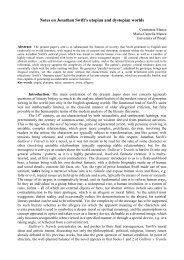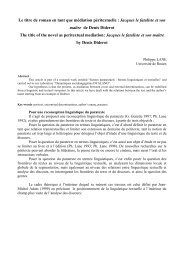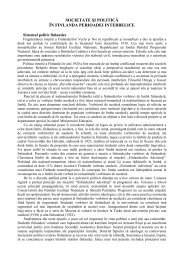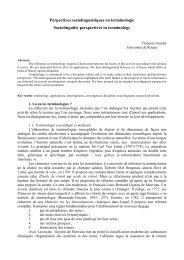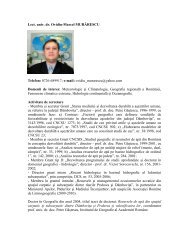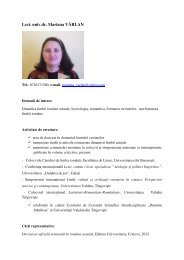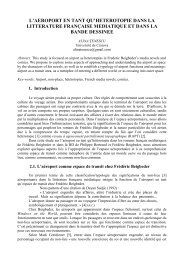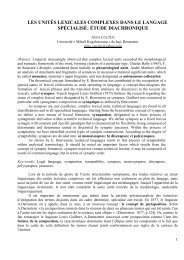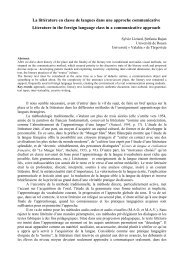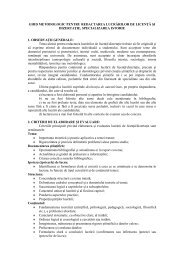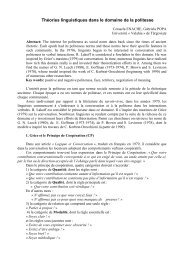THE ANNALS OF „VALAHIA” UNIVERSITY OF TÂRGOVIŞTE
THE ANNALS OF „VALAHIA” UNIVERSITY OF TÂRGOVIŞTE
THE ANNALS OF „VALAHIA” UNIVERSITY OF TÂRGOVIŞTE
Create successful ePaper yourself
Turn your PDF publications into a flip-book with our unique Google optimized e-Paper software.
<strong>THE</strong> ROLE <strong>OF</strong> <strong>THE</strong> WRITTEN MEDIA IN COVERING<br />
NEWS AND EVENTS – A CDA PERSPECTIVE<br />
Ioana RAICU 1<br />
Abstract: Media coverage of news or major events is almost always controversial and<br />
subject to debates. In the attempt to grasp the meaning, the causes and effects of the<br />
respective 'events' related in and by the media, one finds himself/herself in the difficulty to<br />
perceive what is written between lines, what lies behind words, what the media is actually<br />
trying to 'cover'. For analysts, it is even harder. CDA (Critical Discourse Analysis) proves a<br />
helpful tool in analysing media discourse in relation to shedding light upon social, cultural or<br />
political events of major interest. It is what the following article undertakes to bring forth by<br />
showing how CDA manages to play a basic, theoretical role in a study that proceeds to<br />
discourse analysis of a certain type.<br />
Key-Words: media discourse, political discourse, CDA, discursive practices<br />
In the introduction to his book, Analysing Newspapers. An Approach from<br />
Critical Discourse Analysis, John E. Richardson looks into newspaper discourse by<br />
referring to his views of society, journalism and language. In his view, 'Journalistic<br />
discourse has some very specific textual characteristics, some very specific<br />
methods of text production and consumption, and is defined by a particular set of<br />
relationships between itself and other agencies of symbolic and material power'<br />
(Richardson 2007: 1) which sets of characteristics 'that is, the language of<br />
journalism, its production and consumption and the relations of journalism to social<br />
ideas and institutions – are clearly inter-related and sometimes difficult to<br />
disentangle. In other words, 'they are different elements but not discrete, fully<br />
separate elements' (Fairclough, 2000, cited in Richardson, 2007: 1). In his opinion,<br />
news are in close connection to the actions and opinions of powerful social groups<br />
and, while it is evident that they have to be understood in connection to the target<br />
and intended audiences, it is wrong to consider that important issues such as<br />
'contemporary democratic politics, social values and the continuing existence of<br />
prejudice and social inequalities' should be looked into outside the influence of<br />
journalism. They are key themes that are also the result of the 'structures, functions<br />
and power of journalism' (2007: 1). He argues from the beginning that his analysis<br />
of newspapers is from a CDA perspective, because CDA starts by identifying a<br />
1 Faculty of Humanities, Valahia University of Târgovişte, Lt. Stancu Ion Str., no. 35, ROMANIA,<br />
joanna_2807@yahoo.com




